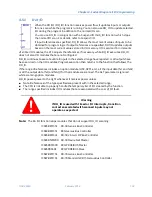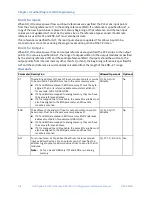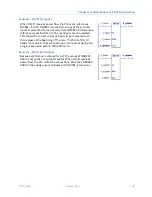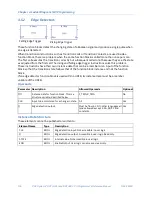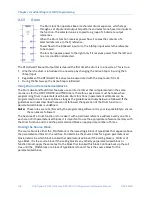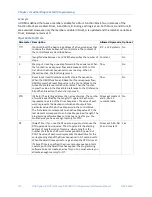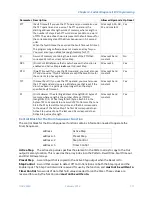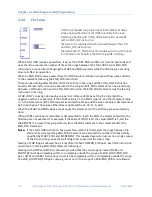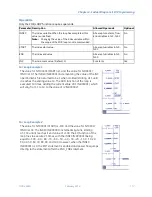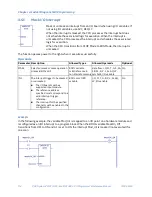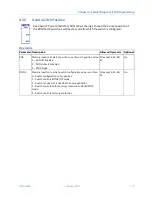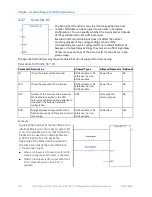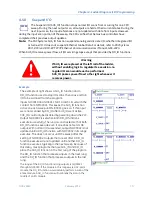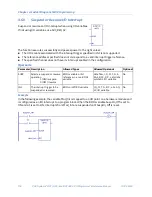
Chapter 4. Ladder Diagram (LD) Programming
108
PACSystems* RX7i, RX3i and RSTi-EP CPU Programmer's Reference Manual
GFK-2950C
4.5.3
Drum
The Drum function operates like a mechanical drum sequencer, which steps
through a set of potential output bit patterns and selects one based on inputs to
the function. The selected value is copied to a group of 16 discrete output
references.
When the Drum function receives power flow, it copies the contents of a
selected reference to the Q reference.
Power flow to the R (Reset) input or to the S (Step) input selects the reference
to be copied.
The function passes power to the right only if it receives power from the left and
no error condition is detected.
The DTO (Dwell Timeout Output) bit is cleared the first time the drum is in a new step. This is true:
▪
Whether the drum is introduced to a new step by changing the Active Step or by using the S
(Step) Input.
▪
Regardless of the DT (Dwell Time array) value associated with the step (even if it is 0).
▪
During the first sweep the Active Step is initialized.
Using Drum in Parameterized Blocks
The Drum dwell and fault timer features use an internal timer that is implemented in the same
manner as for the OFDT, ONDTR, and TMR timers. Therefore, special care must be taken when
programming Drum in parameterized blocks. Drum functions in parameterized blocks can be
programmed to track true real-time as long as the guidelines and rules below are followed. If the
guidelines and rules described here are not followed, the operation of the Drum function in
parameterized blocks is undefined.
Note:
These rules are not enforced by the programming software. It is your responsibility to ensure
these rules are followed.
The best use of a Drum function is to invoke it with a particular reference address exactly one time
each scan. With parameterized blocks, it is important to use the appropriate reference memory with
the Drum function and to call the parameterized block an appropriate number of times.
Finding the Source Block
The source block is either the _MAIN block or the lowest logic block of type Block that appears above
the parameterized block in the call tree. To determine the source block for a given parameterized
block, determine which block invoked that parameterized block. If the calling block is _MAIN or of
type Block, it is the source block. If the calling block is any other type (parameterized block or
function block), apply the same test to the block that invoked this block. Continue back up the call
tree until the _MAIN block or a block of type Block is found. This is the source block for the
parameterized block.
Содержание PACSystems RX7i
Страница 357: ......
Страница 466: ...Chapter 9 Diagnostics GFK 2950C February 2018 451...










